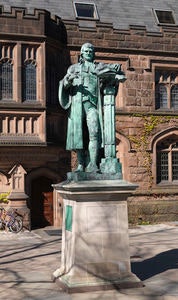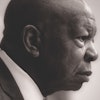Although the COVID-19 pandemic intensified racial divides in America, it did have one tempering effect. As students moved off campus and learned from home, the battles that had raged over building names statues, and memorials of figures associated with slavery, segregation, and eugenics cooled. Now, with campus life having returned to some version of normal, debates over landscape fairness are back.
 The statue of John Witherspoon at Princeton
The statue of John Witherspoon at Princeton
For nearly 300 graduate students, undergrads, faculty, and staff, Witherspoon’s statue had to come down. They signed a petition last spring arguing that the monument should be replaced a plaque explaining both the positive and negative aspects of Witherspoon’s legacy.
“It’s something that’s bothered me ever since I’ve been at Princeton,” said Sam Bisno, a junior and history major who signed the petition. “[The statue] obviously represents the ideals that we’re supposed to carry on as students and as citizens. So, the fact that there’s no mention whatsoever of the fact that this man’s ideals were deeply racist bothers me.”
But some students and alumni defend Witherspoon and the statue. They argue that Witherspoon’s contributions to Princeton and to America outweigh his ownership of slaves. And they say that his perspective on slavery was more complex than the statue’s opponents allow. Witherspoon tutored free Blacks while at Princeton. And some of his writings decry slavery—or at least enslaving new people. The statue’s supporters emphasize that Witherspoon believed that immediate abolition with no preparation for free society would bring the enslaved to ruin and that he thought that abolition was unnecessary because slavery would die out in a matter of years. And while many would agree to adding a plaque discussing Witherspoon’s relationship with slavery to the monument, they feel strongly that the statue must continue to stand.
“Witherspoon was a great man who deserves to be honored,” said Stuart Taylor Jr., a Princeton alum from the class of 1970 and the director of Princetonians for Free Speech, a pro-statue group. “[He has] a very mixed and not altogether bad record on slavery and a very noble and admirable record in every other way.”
The petitioners disagree and believe that adding a plaque to the statue about Witherspoon’s relationship to slavery is insufficient because the statue itself, bronze and towering, holds up Witherspoon as a subject for reverence.




















